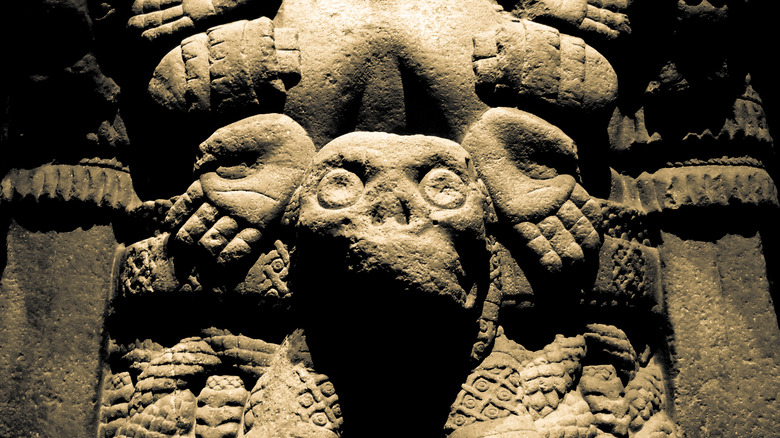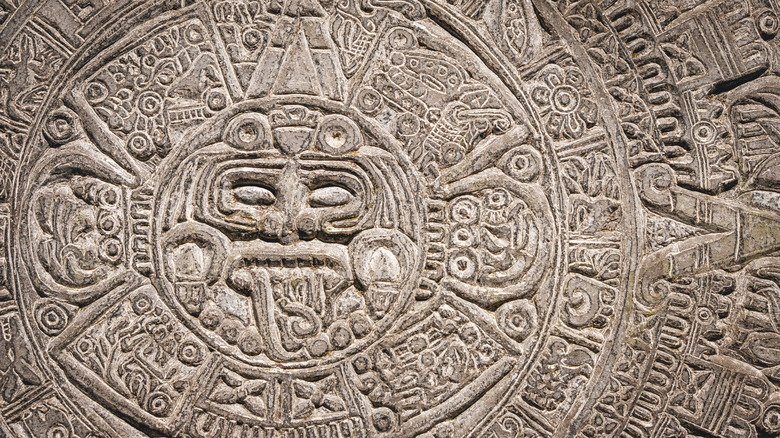The Aztec Creation Myth Explained
Creation myths often appear so fundamental to a particular culture that they seem to have arrived in a vacuum, that their narrative logic is so perfectly internalized that they couldn't possibly be the product of human imagination. Perhaps this is what gives them their power, and why, however alien to a person's own experience a particular culture might be, every creation myth seems to exude a religious power that is uncannily familiar.
The Aztecs, the Mesoamerican culture that was dominant in Central Mexico from 1300 to 1521, have several creation myths. Thought Co. argues that this is the result of the civilization's combining cultural material from a variety of earlier sources, which were absorbed into their own mythology the same way the gods of Ancient Rome derived from those of Ancient Greece. Such stories were not written down, but passed down orally, meaning that stories tended to change and merge with others over time.
For the Aztecs, time was cyclical, with a myth known as "The Legend of the Fifth Sun" describing four previous periods of earth that ran for 676, 676, 364, and 676 years respectively (per Thought Co.). Each period is dominated by a different set of gods and a different natural phenomenon which would come to destroy the world and begin a new cycle, or "Sun." The Aztecs believed, for example, that the previous period to the one in which they lived was dominated by water, and was destroyed by a great flood which wiped out the first humans. The story of the creation of our present world begins in Aztec culture with Coatlicue, the Earth Mother.
Aztec beliefs about the sun and moon
According to Britannica, Coatlicue, who was the mother of numerous gods and goddesses, one day happened across a ball of hummingbird feathers. The Earth Mother gathered the feathers and hid them under her skirt. Miraculously, she became pregnant. Coatlicue's existing children, including her daughter Coyolxauhqui, the Moon Goddess, were incensed, and demanded to know the identity of the unborn baby's father. Coatlicue's children pursued her, intending to kill her, per World History.
However, one popular version of the myth claims that Coatlicue's baby emerged just in time: It was the Sun God Huitzilopochtli, who cut Coyolxauhqui in two with a flaming sword. Her top half became the moon, while her bottom half became the earth.
Per Britannica, such beliefs instilled in the Aztecs a belief that the Sun God must therefore be appeased, and that they, the Sun People, had to offer human sacrifice in the form of blood and human hearts to keep the sun in place. As such, human sacrifices were a ritual act throughout the Aztec Empire, with offerings being made to both Coatlicue — also known as "The Grandmother" — and the Sun God Huitzilopochtli.

